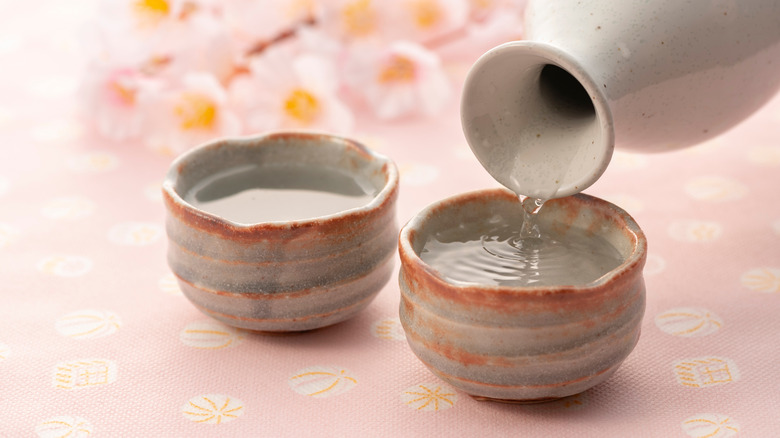Sake Basics, Beyond The Bomb
Sake: as ancient and mysterious a drink as the lost secrets of the Far East. But for however ubiquitous the drink has become here in the United States, the fundamentals of the beverage are often lost on most. To that end, we've broken down the basics for you in this primer.
Style Guide
To start, it's important to know that sake is divided into eight main categories (that is, excluding the many subdivisions and unique homebrews). Keep in mind, also, that sake doesn't always have a distinct up-or-down sliding scale to it — it's a lot harder to rank and judge different types of sake, as they each have their own unique pros and cons.
First up is Nigori, which is very common in the U.S. and easily recognized by its cloudy appearance. Characterized by its sweet, fruity flavor, Nigori does not technically fall under the title of sake because it isn't filtered. To be considered as such, it would have to be purified and then remixed with the sediment. Next is Futsu-Shu, or "table sake." Think of it as the Japanese equivalent of French table wine — not meant to be thoughtfully analyzed, it's the kind of drink that is meant for more regular, everyday consumption.
The Futsu-Shu and the Nigori are very different from the next six, which are much closer in style: they are Junmai, Honjozo, Ginjo, Junmai-Ginjo, Daiginjo, and Junmai-Daiginjo. What these names refer to is how much of the rice grain is polished off during the brewing process — distracting, but flavorful, vitamins and nutrients are stripped away from the starch in the center, which creates the alcohol. This means that the further you go up the scale, the smoother and dryer a flavor you get. The scale goes from Honjozo to Ginjo to Daiginjo, which is to say from 30- to 50- to 60-percent polished off. This means the Honjozo is more likely to be fruity and mellow, while the Daiginjo will be drier, with more concentrated flavors.
Check the SMV
If any of this seems too confusing (remembering the names can be a lot of work), just try looking for the SMV (Sake Meter Value), on the back of the bottle. More and more brewers are starting to include this handy guide on their labels to help American sake drinkers who are just getting into the sake scene. Usually, the scale goes from 20 to negative 20, with 20 being extremely dry and negative 20 being very fruity and sweet.
Sippin' on Sake
Now that you know the types, there's the issue of how to drink them. Despite the popularity of sake "bombs," sake is a great choice to have with meals (and not a 3-in-the-morning drinking binge). To be fully appreciated, sake should be sipped (sipped!) at either room temperature, or slightly chilled.
Hot or Cold?
Another important question most sake lovers face is when to drink it hot and when to drink it cold. Well, there's no straight answer to that. The common myth is that bad sake is heated, while good sake is served cold. Not true. Bad sake served hot will taste like bad hot sake. Some bottles are actually designed to be served hot, while others aren't equipped for it. True, usually the lower-quality categories such as the Futsu-Shu and Nigori deal with the heat better, but there are also some Junmai and Honjozo that can stand a little warming up. The higher up varieties, however, such as the Ginjo and the Daiginjo, are almost always served at room temperature or chilled, and never in a small wooden box, which can damage the subtle flavors of a finely crafted sake with the harsh taste of Japanese cedar.
So, to review, the order goes Nigori (cloudy), Futsu-shu (table sake), and then it splits into two rows, going up from Junmai and Hanjozo all the way up to Daiginjo and Junmai Daiginjo. And while Daiginjo bottles will run you the most coin, remember that there is no wrong answer, and the best way to find what you like is to just give it a try. Kanpai!
